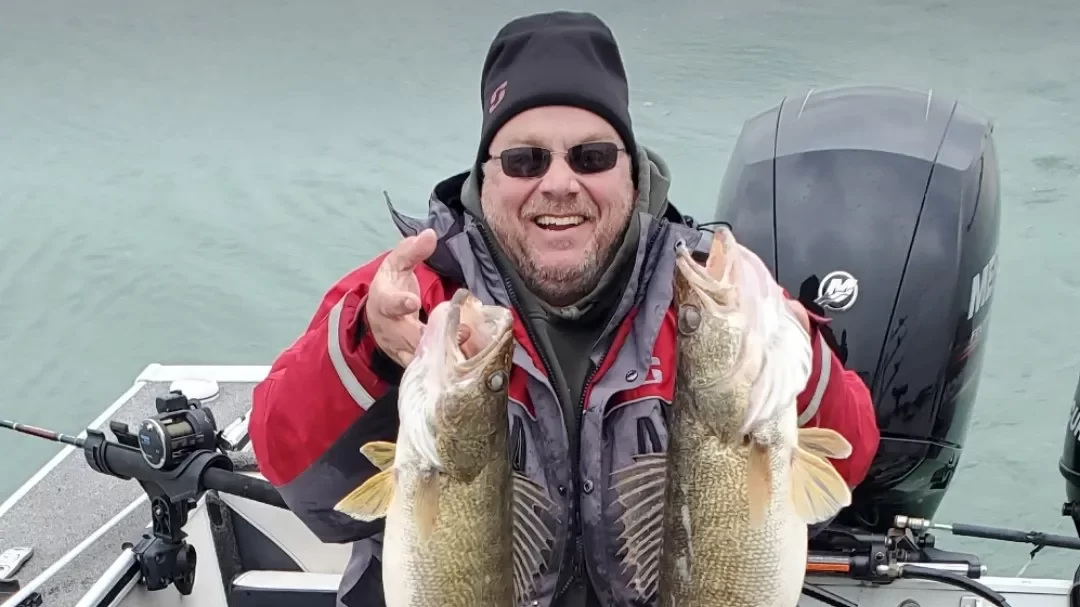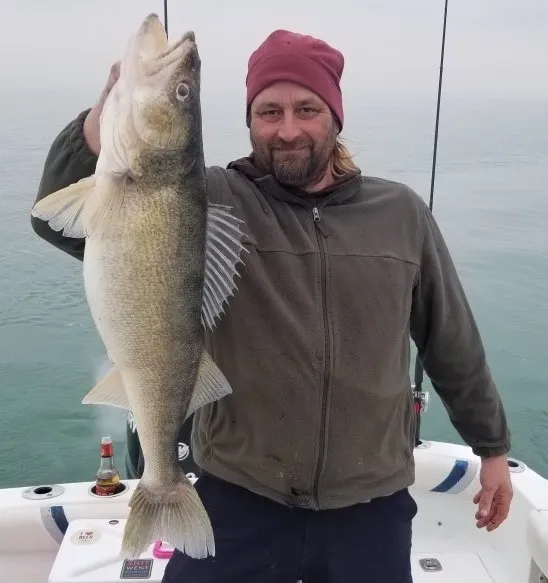




In case you didn’t know, Lake Erie is the best walleye lake in the world. I may be a bit biased though. Growing up in southeast Michigan, I had the luxury of fishing the lake from the time that I was a young boy. Nonetheless, I have never caught walleye with the size & in the numbers that I have on Lake Erie anywhere else. It has everything a walleye loves: plenty of forage, dark water, and massive tributaries that provide them with some of the most ideal spawning grounds found anywhere on earth.
Walleye are native to the Great Lakes and are found in fishable numbers in all of them. But a combination of factors has led to immense numbers of them in Lake Erie. Lake Erie receives considerably more fishing pressure than the other Great Lakes and despite this, it continues to produce many more fish per angler-hour. And walleye are the top attraction.
But managing Lake Erie walleye is no easy task. The reputation the lake has developed over the years has resulted in visitors from all over the country flocking to the lake every year to get a piece of this phenomenal fishery. The industry that the lake supports runs in the hundreds of millions of dollars. This has led to immense pressure on state and federal agencies whose task it has become to manage the fish in this lake. And with walleye being the most popular, there is a lot of focus on this key species.

To better understand what goes into the task of managing Lake Erie walleye, The Great Lakes Fisherman caught up with Jim Francis of the Michigan DNR to discuss the coordination with other agencies and some of the factors that they consider and study in the process.
GLF: What is your name, title, and organization?
Jim Francis, Lake Erie Basin Coordinator, Michigan Department of Natural Resources – Fisheries Division
GLF: Which state, provincial and federal agencies are involved of the efforts to manage the Lake Erie walleye population?

GLF: How long has the Lake Erie walleye population been actively managed?
GLF: If possible, please outline the annual calendar for the walleye management plan (or provide links to similar info).
GLF: How often are Lake Erie walleye stocking levels evaluated?

GLF: If the fishery is self-sustaining, what “levers” are used to manage the population?
The second area that we can impact is habitat quality. Most fish in the Great Lakes utilize marshes at one point or another during their lifecycle. For walleye, the fish rely heavily on marshes during the fry stage of their development. The marshes provide food and shelter from predators until the fish are large enough to survive in the open lake. By maintaining and improving marsh habitat, we can have a direct impact on the survivability of young-of-year (fry that that were born that same year).
GLF: How has the cleanup of lake water pollution over the years impacted the Lake Erie walleye population?
GLF: How has the introduction of zebra and quagga mussels had an impact on the Lake Erie walleye population?
GLF: How has the introduction of the Round Goby had an impact on the Lake Erie walleye population?

GLF: Are there any impacts (positive or negative) that climate change is having on the Lake Erie walleye population?
GLF: What is magnitude of the walleye population gradient from the east end of Lake Erie to the west end?
GLF: What are some of the challenges that the agencies will be facing in managing the Lake Erie walleye population over the next decade?
GLF: Is there anything else you would want anglers to know about the management of the walleye population in Lake Erie?
The Great Lakes Fisherman would like to thank Jim for taking the time to answer our questions and layout all of the work that goes into managing such a massive fishery.
If you see a natural resources worker at the boat ramp or out on the water, please remember to thank them for the work they do. This work is essential to a quality fishery and is what makes our Great Lakes the best inland fishery in the world.
Finally, if there are other lake management topics that you would like to hear about, please drop us a comment below and let us know about it. We are always looking to provide you with the content your are interested in hearing about!

